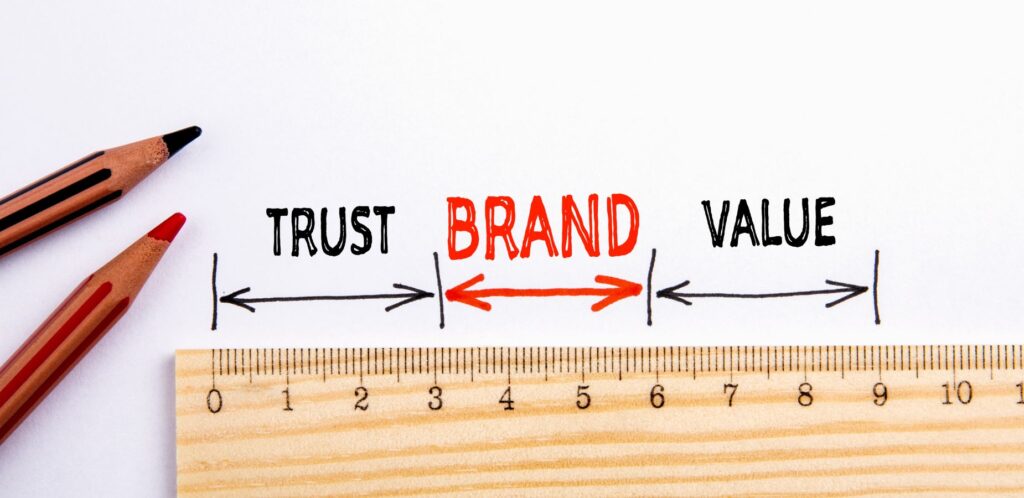Branding is more than just a logo or a catchy tagline—it’s the heart of your small business. It’s how you present yourself to the world, build trust with customers, and create lasting impressions. Whether you’re just starting out or looking to refresh your image, effective small business branding helps you stand out in a crowded market. In this blog, we’ll dive into practical strategies that small businesses can use to build a memorable brand, connect with their audience, and grow their business.
Let’s explore how you can turn your brand into a powerful tool for success!
Why Is Small Business Branding Important?
Consumers receive thousands of advertisements per day, and hence brands become a north star for a business. In fact, this is the beginning point that gives rise to trust, loyalty, and meaningful relationship-building with customers. More so than larger companies, business requires strong branding to compete and essentially stake out their individuality in the marketplace.
Who is it for?
For the small business, then, effective branding is often a great equalizer against much bigger competitors because it clearly communicates your unique value proposition, builds credibility, and triggers an emotional attachment by your customers. In addition, a good brand can command a price premium: Many people associate well-branded business owners with higher-quality products and/or service.
Small Business Branding in the Digital Age

1. The Evolution of Digital Branding
Small business Branding has been done differently in the digital landscape. Such platforms and websites, among others digital marketing channels, have come to be viewed as major touchpoints for brand interaction. Digital business branding therefore involves almost everything relating to user experience and personality on social media and more critically the online approach to customer service.
2. Multi-Channel Presence
Today’s great business branding say one thing but adapt that message to suit the unique feel of each of these silos. Whether Instagram-first visual appeal, professional atmosphere like LinkedIn, or dynamic short-form experience of TikTok, unique content on each platform requires a customized approach yet always delivers brand coherence.
3. Data-Driven Branding
Data analytics are increasingly informing modern branding choices. The refined Data analytics tools used to track brand perception, customer engagement, and the effectiveness of marketing have become accessible even for small businesses, fine-tuning branding strategies according to concrete insights instead of assumptions.
4.Brand Voice and Personality
Brand voice pertains to the different personality and tone of a brand’s voice. Brands use their voice in various ways to resonate with their audience, being warm, inspirational, bold, or humorous.
A good branding strategy should be consistent, yet different enough to represent the personality and values of your brand. A voice that is professional, relaxed, funny, or even serious is necessary but also needs to connect with your target market. Consistency in every communication is essential for building recognition and trust.
5. Visual Identity
A cohesive visual identity is more than a logo-it’s all the color palettes, typography, style of imagery, and design elements to name a few. By 2024, this visual brand can easily thrive on both digital and physical media formats-from a mobile app to a business card.
6. Brand Story and Values
This new consumer of today connects and engages more with business which have much to say by telling them a story and even emphasize the same values. Your brand story has to authentically communicate your business’s mission, vision, and unique value you bring into your customers’ lives.
10 Strategies for Establishing Your Small Business Brand Identity

1. Define Your Brand Purpose
To get started you need to clearly define why your business exists for more than just the sake of making money. The reason for your branding purpose must relate to the problems that you solve for your customers and how that makes their lives any better.
This is the bedrock for all of the branding decisions you will ever make and enable you to create a deep connection with your audience.
2. Know Your Audience Intimately
Has there ever been a more crucial time to zero in on your target audience? Besides building demographic profiles, you should seek to craft rich personas that detail psychographic drivers-values, interests, and pain points.
You can then use that understanding to build brands that “talk” to the needs and aspirations of ideal customers.
3. Craft a Compelling Visual Identity
Your graphic identity will need to be one and many in all the devices. Make professional designs so that they do good and stay alike on all your branding contact points. Then see how your images are going to look everywhere-from social media to product packaging.
4. A Content Strategy
Content is still the king of brand building. High-quality relevant content creation that communicates a feeling and builds expertise, filling the needs of your audience. Prioritize quality over quantity, and be steady in publishing through all of the channels you have chosen.
5. Social Proof
You need to get customer trust through reviews, testimonials, etc. In 2024, consumers will still value social proof when making a purchase decision. Collect and showcase positive experiences of your customers on your digital channels.
6. Authentic
The new customer can take branding from a mile away. Be authentic, transparent, own up to mistakes when made, and be highly accessible to your audience. Authenticity equals trust and loyalty.
7. Customer Experience Over All Above
Customer experience is just the same as the strength of the branding strategy. Ensure that any interaction with your business-from navigating your website to customer service-reflects your brand values and meets or exceeds customer expectations.
8. Set Sustainability
This is the time where environmental consciousness is increased. You have to adopt the concepts of sustainability in your branding strategy. That could be in the form of eco-friendly packaging, responsible sourcing, and more along these lines, supporting environmental causes that relate to your brand values.
9. Building Community Engagement
Engage with your customers; engage them with your branding plan and with each other. Involving social communities, loyalty programs, or events tends to bring the brand to life and create a sense of belonging in your customers.
10. Monitor and adapt
Lastly, track the performance of your business through analytics and response from your clients. Prepare to make modifications to your small business branding strategy because things change in the market and new opportunities arise. Strong brands in 2024 are flexible while staying true to their core identity.
Local Branding Strategies

1. Brand Engagement with the Community
This is initiated by intense community integration for the year 2024 to achieve successful branding at the local levels. Small business has to demonstrate ownership of the local ecosphere not an appendage commercial entity. They participate in other community functions, support causes, and create additional local business relationships.
Once your brand has been recognized for being supportive to the community and is also engaged in it, then you have automatically attracted loyal customers who share the same values for growth and development within the local area.
2. Hyperlocal Marketing Solutions
Hyperlocal marketing power has exponentially grown in the last few years. This can really pay off in terms of communicating your brand’s message and tailoring your marketing efforts towards specific neighborhoods or communities within your service area. Use local SEO techniques so the business pops up on neighborhood-specific searches, and include content that refers to landmarks, community-specific events, and other cultural nuances present in the area. Try business listing sites in this part.
Through this approach, a brand is given the opportunity to resonate better with customers dwelling in the local community as such customers appreciate businesses that “get” their immediate environment.
3. Local Digital Presence
Whereas having a local physical presence is of vital importance, so also is the local digital presence. Ensure you have an optimized Google My Business Profile, active social media accounts in your vicinity, as well as participate in online local communities. By doing this, you develop a body of content that illustrates your involvement in local activities and materializes stories about your community customers. This hybrid model therefore makes the brand relevant to both online and off-line crowds.
Building Brand Trust and Loyalty

1. Design Consistency:
Consistency is the foundation of trust. Every touchpoint with your brand-be it in-store or online or over the telephone from customer service-must be identical in terms of quality and execution with a clear expression of intent. In 2024, this means value drawn out in every touchpoint, from user experience to the way your employees give service to your customers. Brand guidelines must therefore comprise not only all that is visually right but also outline customer service protocols and communication styles.
2. Clear Operating Business
Most of what today’s customers want is transparency. Let them walk through your journey, all the successes and setbacks, your pricing strategies, what you sourced, and what your firm policies are. Let them know anytime there is a need to change any policy. Such transparency will let your customers trust you more, deepening them in connection with your brand.
3. Adoption of Customer Satisfaction
Prove that you care about the satisfaction of your customers by actively seeking and working on feedback. Ask customers as a way to encourage them to come back and tell how things are going and what they think is needed. Most importantly, communicate to your customers how this is being implemented in aspects involving the alteration of product lines, services, and the running of the business relating to your customers. This is a way of an opinion cycle that further thumps brand loyalty and lets your customers know that you care for their opinions.
Measuring the Success of Your Branding Efforts

1.Brand Awareness Metrics
Multi-dimensional tracking Measuring brand awareness will involve tracking the social media mentions, website traffic, and search engine rankings of your brand name or keywords. Observe the instances where the brand is being mentioned directly or indirectly on other channels. Social listening tools reveal what people think about your brand and also in what context they discuss it. Therefore, you would see a complete picture of the reach and resonance of your brand within your market.
2. Analytics Engagement
This year, it extends way beyond the like and share count. Look into the quality of the interactions that your brand is getting on all channels. Check comment sentiment, time spent in the website, what kind of questions the customer is asking you, etc. Measure just how these engagements work out in real business outcomes-lead generations, sales conversion, and so forth. That will give you an idea of which aspect of branding is being resonated by an audience most.
3. Customer Loyalty Metrics
Customer loyalty, too, can be measured by both quantitative and qualitative metrics. These metrics are repeat purchase rates, customer lifetime value, and even referral statistics. Make sure that the loyalty programs set up in reward customers and simultaneously provide you useful data on purchasing patterns and preferences. Regular consumer surveys and sessions will give you insight into an emotional attachment with your brand.
Branding Challenges and How to Conquer Them

1. Digital Surplus
The biggest challenge in 2024 is standing out in the digital noise world. Tipping from being just noise to saying something distinctive and value-driven content that addresses particular needs of the customer, rather than trying to just chip in to the noise. Establish a unique brand voice, ensuring that all communications channels deliver an inclusive message with which customers engage.
2. Using Emerging Technologies
Technologies like AR or VR to create memorable brand experiences to differentiate you in 2024. Many small businesses have so little to brand with budgets that high-impact and low-cost strategies to combat this should be focused on. For example, use user-generated content; promote customer reviews and develop stronger relationships with your community’s micro-influencers.
3. Consistent Message Across All Channels
The more the number of marketing channels, the harder it will be to maintain consistency for the brand. A good document explaining everything about brand presentation is needed. Using resources, make content development and scheduling procedures as smooth as possible. The inconsistencies can be identified before they gain much magnitude with a regular brand audit.
4. Sudden Changes in the Market
The business climate of 2024 is changing at breakneck speed. Be flexible, keep track of the changing market trends and preferences from the customers, and introduce flexibility within your branding strategy based on your core brand values. Design a framework that permits instant decisions that allow for change but ensure all such changes do not compromise your strategy.
How to Engage With Your Target Audience as a Small Business Owner

1. Understanding audience behavior
This is an effective engagement strategy from your sense of the psychographic factors influencing your target market to their behavior, preferences, and pain points. It will go beyond demographics in 2024 to a better reflection of how decisions by customers really are driven through psychographics and bring data analytics together with forms of customer feedback.
2. Positive Interactions
Engagement tactics will be about relevant, interactive conversation with your audiences. That might look like structured engagement of the context within content that encourages engagement, whether it is social media, email marketing, or a live conference. Ideally, this will create a knowledgeable, listened-to, and valued community within your business mission’s context.
3. Personalized Communication Strategy
Engagement with audiences Personalization is growing in importance. Use customer data to deliver communications that are directly spoken to individual needs and preferences. That may mean personalizing your efforts at email marketing, the suggestions of product you make to individuals and simply targeting social media content to speak to a specific portion of your overall audience.
Pro tricks for Smart Brand Positioning
1. Find Your Unique Value Proposition
Successful brand positioning begins with a clear definition of what’s special about your business. Competitive 2024 may mean not only the characteristics of the product but also the emotional and practical benefits provided to customers. The unique value proposition may include addressing distinct needs of target customers and business differentiations from other competitions.
2. Strategic Market Positioning
Position your brand strategically in your market, preferably at a gap in the market that your business can fill. Evaluate competitor positions to identify an opening or opportunity in offering something that is different or better. The considerations here are along dimensions like price point, quality level, and service offerings as you settle on your optimum market position.
3. Communication of Brand Value
When you are positioning yourself, therefore, that is what you must do-to clearly and consistently articulate it across all channels. So, therefore, your messaging will not only be strengthening that unique value proposition but telling the customers why they should choose your brand over the other. Use storytelling as a way to remember that position for the target audience.
The Importance of Consistency in Branding
1. Maintain Brand Standards
Maintaining branding consistency makes possible the identification of a brand and increases its credibility. Define how your brand is represented across all touchpoints clearly by creating crystal clear brand guidelines defining visual elements like logos, color palette and tone of voice, customer services standards, and communication protocols.
2. Cross-Channel Consistency
Consistency is the key in the omnichannel world though between different platforms and channels. Your message and visual identity must be kept consistent from social media through to your website, from print materials, and even in person. It therefore helps build a strong, recognizable brand identity.
3. Internal Brand Alignment
Brand consistency starts from the inside. Educate all employees on your brand values, voice, and positioning. Build continuing training and resource support for employees to ensure daily work is always in alignment with your brand. Once employees are working in alignment with your brand values and parameters, authenticity and consistency flow directly to your customers.
Branding for Diverse Audiences, Know About Basics
1. Understanding the Nuances of Culture
In the globalised marketplace, developing a pleasant brand is a intensive part of cultural nuances and sensitivities. Small businesses should be aware that how their brand message will be perceived would vary from culture to culture. It’s not just about translating the marketing materials but much more needs to be comprehended pertaining to cultural values, traditions, and societal norms that impel consumer behavior and the way it will react towards a brand.
2. Development of an inclusive brand
Brand identity has to be inclusive in the year 2024. Brand elements need to resonate with many audiences, yet avoid culturally insensitive or stereotypical sounds. Colors, images, language, and messaging have to be chosen very prudently in a way to avoid being offendable yet appealingly resonating with diverse cultural backgrounds. Business owners need to do lots of homework and perhaps hire a cultural expert so that their efforts are authentic and right.
3. Localization Strategies
Localization is the heart of great cultural branding; it’s presentation and message tailored to the local market but holding on to that which makes the underpinnings of the brand. It could be the visual inputs, style of communication, or indeed the product or service that really hits at the culture and customs of a place. Yet again, all these boil down to this very delicate balancing act between global consistency and local relevance.
Customer Feedback: How This Defines Your Brand
1. Getting Started with the Good Stuff: Finding Meaty Feedback
Customer feedback has been the gold mine of developing a brand in 2024. Organise structured processes for taking feedback on other channels, such as social media, through customer surveys and focus groups or direct engagements with customers. This should ensure you collect both the quantitative and qualitative data that would inform your branding choices and point out areas of improvement.
2. Application of Customer Insights
Actionable branding strategy through customer feedback Harness the raw opinions of customers into actionable branding strategies through the patterns of their feedback and by common themes as well as through strategic changes in your brand elements that will follow from customer input. Pay much attention, also to, how customers feel about your brand since emotional responses tend to hold more value for brand development and refinement.
3. Creation of customer-centric brands
Leverage customer feedback to create a more customer-centric brand experience. That is to say, strive all the way to align your brand values, messaging, and offerings with what customers truly need and expect. Continuously realign your brand strategy based on changing customer preferences and market trends as perceived through channels of feedback.
Collaborative Branding: Partnering for Greater Impact
1. Strategic Partnering
Co-branding is a good way of increasing the scope and credibility of your brand. Partners should be companies whose missions and visions are in consonance with yours and whose products or services for your target customers complement those of yours. In 2024, partnering is not only limited to commercial business relationships but to influencers, community agencies, and cause-related enterprises.
2. Co-Branding Activities
Co-branding of initiatives: Have mutual value creation for the parties involved. This would include co-launching co-products, shared marketing campaigns or co-events. Ensure that these activities support your strategy while building the brand and not watering it down.
3. Community Collaboration
Local partnership and social pressure. Partnering with local stakeholders for events held in the community on causes you can relate to your brand’s values or the values of your target audience. Such partnerships can build strong engagement and enhance a brand’s reputation.
Brand Trends in 2024: Sustainability and Social Responsibility
In the year 2024, brand identity promoted environmental awareness and social responsibility. Today, everyone looks up towards brands that take promises towards sustainability and social causes through which they can be honest. Align the action with the messaging, and make your branding strategy rooted in it authentically.
1. Adoption of Technology
New branding technologies shape new possibilities: Think through new directions new technologies can take to enhance brand experiences without sacrificing authenticity or humanity. Steer your focus-whether it’s simple but authentic value addition to your relationships with customers rather than attempting to blindly follow the crowd.
2. Authenticity and Transparency
One of the most notable trends is authentic brand experiences. Consumers want personality in a business and the workings of the operations themselves-to be transparent to a fault. Small businesses take advantage of this by engaging viewers with behind-the-scenes content, introduction to team members, and overall discussions on the journey of the business and successes and failures.
3. Sustainability Focus
Environmental awareness seems to seep into the brand. Small businesses have infused sustainability as a DNA into core messaging. Where but in the package and packaging, which is now environmentally friendly? And more responsibly sourced. Not marketing; quite a few real commitments toward environmental stewardship through acts.
4. Digital-First Branding
And as businesses go further down the line of more significant changes toward digital interactions, an online presence becomes the pathway to leveraging those interactions. That is to say, much more interactive website experiences and active social media profiles and video content as ways to connect with your audience. For example, short-form videos can no longer be ignored as parts of brand storytelling and connection to your customers.
5. Personalization and Community Building
Brands are moving away from the one-size-fits-all toward one-size-fits-one or more customized experiences and community building. Smaller businesses tap on data analytics through targeted customized content and experience and good community ties because they are engaging and have social media interaction at the level.
6. Easy Design Aesthetics
In the last few years, a simple and clear trend was relatively new in visual business branding. Indeed, the digital world has taken the risk of too many visual elements and replaced it with this clean design that works perfectly across several digital platforms, thus securing brand recognition with a professional look at every touchpoint.
The themes will reveal the working agile and responsive characteristics to the rapidly changing consumer preferences yet still prove distinctly authentic to the brand. In this respect, successful small businesses in 2024 would be those that are versatile enough to ride the trends but can remain focused on their core values as well as on the unique market position.
Conclusion
Ideally, as we step into 2024, the successful small business branding does indeed lie in a sensitive balancing act between cultural sensitivity and customer responsiveness, digital excellence, and strategic collaboration, being mindful of trends, and more. Keeping all of these key areas in mind, staying true to the audience, and therefore allowing you the ability to create a strong brand that resonates with these diverse markets and platforms. Therefore, effective branding would involve adaptation and refinement of a process that is guided by core values as well as customer needs.
FAQs
What is the cheapest method through which I can launch branding for my business?
In a nutshell, the most effective digital expression for your business is the most cost-effective way.
How often do brand elements need to be updated so that the brand does not feel static?
All your core brand elements-meaning logo, colors, and values-shouldn’t change too much, so that people can recognize you.
Can small businesses compete with big brands on branding?
Absolutely. Small businesses really do have many levers when it comes to branding because they can.
What is the biggest branding mistake small businesses make in 2024?
Most small companies have a website, social media, customer service, and other similar establishments but fail to bring brand experience consistency across those channels.
